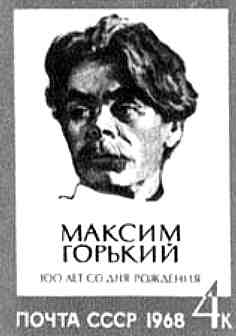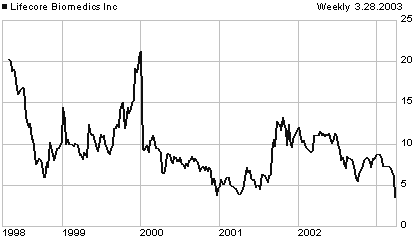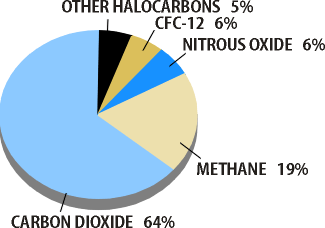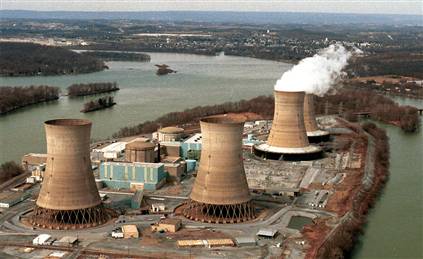Births
which occurred on a 28 March:
1955 Julio
Alonso Llamazares, poeta y novelista español.
1946
Alejandro 'Cholo' Toledo, político peruano.
^
1936 Mario
Vargas Llosa, Peruvian novelist and unsuccessful presidential
candidate.
Vargas Llosa, who
built his fame as a writer on works ranging from novels to plays to
critical essays, was educated in Bolivia, where he grandfather was
Peruvian consul. He attended military school in Lima and began to
publish short stories in the early 1950s. At San Marcos University
in Lima, he became an avid Communist, but his later politics became
increasingly conservative.
From
1959 to 1966, he lived in Paris and published his first novel, The
Time of the Heroes (1963). In 1966, he published The Green
House and the following year produced The Cubs and Other
Stories. After 1966, he lived in England, the US, and Spain and
returned to Peru in 1974, where he wrote several bestsellers. In 1990,
he ran unsuccessfully for president of Peru. In 1994, he received
the Cervantes Prize, the most prestigious international award for
Spanish-language literature. |
1933 Juan Sandoval Íñiguez, cardenal of Guadalajara, born
in Yahualica. He was ordained a priest on 27 October 1957, and consecrated
a bishop on 30 April 1988 foc Ciudad Juárez. He became archbishop of Guadalajara
on 30 October 1994 and was made a cardinal on 26 de November 1994.
1928 Zbigniew Brzezinski national security advisor to US
President Carter
1928 Grothendieck,
mathematician.
1923 Yitz
Herstein, mathematician. He died in 1988.
1914
Edmund S Muskie (Sen-D-Me), US Sec of State (1980), candidate for
the Democratic presidential nomination (but he weeped).
1905
Radio fax “a system for transmitting intelligence” is
patented by Cornelius Ehret of Rosemont, Pennsylvania. Faxing would not
become a practical mode of communication until the 1920s, and high-speed
faxes not be available until the 1940s.
1899 August Anheuser
Busch, Jr., US businessman who built Anheuser-Busch into the world's
largest brewery, owner of the St. Louis Cardinals baseball team. He died
on 29 September 1989.
1888 Zelda Viola Strongman
(future Mrs. McCague), in Canada, who would die on 06 August
2001.
1871 Frederick John Mulhaupt, US artist who
died in 1938. — links
to images.
1868 (16
March Julian) Aleksey Maksimovich Peshkov “Maksim Gor'kiy”
^top^
 Soviet novelist, playwright, and essayist, who was a founder of socialist
realism. Although known principally as a writer, he was also prominent
in the Russian revolutionary movement. Gorky was born in Nizhniy Novgorod
(renamed Gorky in his honor from 1932 to 1991), into a peasant family.
He was self-educated. Compelled to earn his own living from the age
of nine, Gorky worked for many years at menial jobs and tramped over
a great part of European Russia. During this time he shot himself
through a lung in an attempted suicide, later developing tuberculosis,
which left him in ill health for the rest of his life. Bitter experiences,
thence his pen name (gor'kiy = bitter).
Soviet novelist, playwright, and essayist, who was a founder of socialist
realism. Although known principally as a writer, he was also prominent
in the Russian revolutionary movement. Gorky was born in Nizhniy Novgorod
(renamed Gorky in his honor from 1932 to 1991), into a peasant family.
He was self-educated. Compelled to earn his own living from the age
of nine, Gorky worked for many years at menial jobs and tramped over
a great part of European Russia. During this time he shot himself
through a lung in an attempted suicide, later developing tuberculosis,
which left him in ill health for the rest of his life. Bitter experiences,
thence his pen name (gor'kiy = bitter).
[commemorative
stamp “100 let so dne rozhdeniya” >]
Gorky's first short story was published
in a Tbilisi newspaper in 1892, and thereafter he wrote stories and
sketches frequently for publication in various newspapers. His collected
Sketches and Stories (1898) was an instantaneous success
and made him famous throughout Russia. He had thrown off his earlier
romanticism and wrote realistically although optimistically of the
harshness of the life of the lower classes in Russia. He was the first
Russian author to write knowledgeably and sympathetically about workers
and such people as tramps and thieves, emphasizing their courageous
fight against overwhelming odds. Twenty-Six Men and a Girl
(1899; translated 1902), a tale of sweatshop conditions in a bakery,
is considered by many his finest short story.
In 1899 Gorky became associated with the revolutionary activities
of the Marxists. In 1901 Gorky was arrested for publishing the poem
Song of the Stormy Petrel (Pesnya o Burevestnike), a call
for and a prediction of a stormy revolution. But he was released shortly
thereafter. In 1906 he went abroad to raise funds for the Russian
Social Democratic Labor Party. In 1907, because of failing health,
he settled on the Italian island of Capri. He returned to Russia in
1915. Gorky supported the Russian Revolution of 1917 and was active
in literary organizations in the Union of Soviet Socialist Republics
(USSR). Compelled by illness to leave the country in 1922, Gorky spent
six years in Sorrento, Italy. On his return to the USSR, he was received
with official honors. He died on 14 June 1936 after suffering from
chronic health problems for many years. There is some mystery surrounding
Gorky's death, which occurred while he was undergoing routine medical
treatment. At the 1938 show trials staged by Stalin, police chief
Grenrikh Yagoda confessed to having ordered Gorky's death, which is
of no value whatsoever. Many historians believe that Soviet ruler
Joseph Stalin may have ordered Gorky killed.
Gorky's novels include Mother (Mat', 1907), an influential
piece of propaganda about the revolutionary spirit of a religious
peasant woman who joins the socialists after her son's arrest as a
political activist, and the tetralogy The Life of Klim Samgin
(1927-1936), a series on Russian history from 1880 to 1917. His best-known
play is The Lower Depths (Na Dne 1902; translated
1912), which depicts men reduced to the ultimate depths of degradation
but retaining positive qualities. Among Gorky's best works are his
autobiographical and literary memoirs. The trilogy consisting of Childhood
(1913-1914), In the World (1915-1916), and the ironically
titled My University Days (1923; translated as Reminiscences
of My Youth), is considered a major artistic achievement because
it lacks the excessive philosophizing of his earlier works and because
it contains numerous memorable characterizations. Reminiscences
of Tolstoy, Chekhov and Andreyev (1920-1928), which avoids the
worshipful approach to famous writers common among Russian literary
critics up to that time, has been hailed as Gorky's masterpiece.
GORKY ONLINE:
Na
dne — Na
dne — Mat'
— Mat'
— Makar
Chudra — Makar
Chudra — Starukha
Izergil' — Starukha
Izergil' —
Chelkash —
Chelkash — Konovalov
— Konovalov
— Pesnya
o sokole — Pesnya
o burevestnike — Chelovek
— Rozhdenie
Cheloveka — Foma
Gordeev — Foma
Gordeev — Storozh
(in English translations): Creatures
That Once Were Men — Creatures
That Once Were Men — The
Man Who Was Afraid — Reminiscences
of Leo Nikolaevich Tolstoy — Through
Russia — The
Billionaire — (co author of:) Reminiscences
of Anton Chekhov
|
1868 Cuno Amiet, Swiss artist who died on 06 July 1961.
— more with links
to images.
1864 Léopold Schmutzler, German artist
who died in 1941.
1862 Aristide Briand France, premier
11 times (1909-22) (Nobel 1926). He died on 07 March 1932.
1861
Alphonse Étienne Dinet, French painter specialized in Orientalism.
who died on 24 December 1929. — MORE
ON DINET AT ART “4” MARCH
with links to images.
1860 José Moreno Carbonero,
pintor español.
1845 Don Juan Tenorio, de
José Zorrilla y del Morral, la obra teatral más representativa del romanticismo
español, se estrena en Madrid.
1818 Wade Hampton,
Confederate war hero of the US Civil War. He died on 11 April 1902.
1811 St. John Neumann, Bohemian-born US bishop canonized
the first American male saint in 1977. He died on 05 January 1860.
1810 Alexandre Herculano de Carvalho Araújo, narrador,
historiador y político portugués.
1809 George Richmond,
English painter who died on 19 March 1896. — MORE
ON RICHMOND AT ART “4” MARCH
with links to images.
1797 A washing machine is patented
by Nathaniel Briggs of New Hampshire.
1793 Henry Rowe Schoolcraft,
US explorer and ethnologist; discovered source of Mississippi River. He
died on 10 December 1864.
1776
San Francisco is founded. ^top^
Juan Bautista de Anza, one of
the great western pathfinders of the 18th century, arrives at the
future site of San Francisco with 247 colonists. Though little known
among Americans because of his Spanish origins, Anza's accomplishments
as a western trailblazer merit comparison with those of Lewis and
Clark, John Frémont, and Kit Carson. Born and raised in Mexico, Anza
joined the army when he was 17 and became a captain seven years later.
He excelled as a military leader, displaying tactical genius in numerous
battles with the Apache Indians. In 1772, Anza made his first major
exploratory mission, leading an arduous but successful expedition
northwest to the Pacific Coast. Anza's expedition established the
first successful overland connections between the Mexican State of
Sonora and northern California.
Impressed by this accomplishment, the Mexican viceroy commissioned
Anza to return to California and establish a permanent settlement
along the Pacific Coast at San Francisco Bay. Although seagoing Spanish
explorers had sailed along the northern California coast during the
16th and 17th centuries, the amazing natural harbor of San Francisco
Bay was only discovered in 1769. The Spanish immediately recognized
the strategic importance of the bay, though it would be seven years
before they finally dispatched Anza to establish a claim there. Anza
and 247 colonists arrived at the future site of San Francisco on this
day in 1776. Anza established a presidio, or military fort, on the
tip of the San Francisco peninsula.
Six months later, a Spanish Franciscan priest founded a mission near
the presidio that he named in honor of St. Francis of Assisi-in Spanish,
San Francisco de Asiacutes. The most northerly outpost of the Spanish
Empire in America, San Francisco remained an isolated and quiet settlement
for more than half a century after Anza founded the first settlement.
It was not until the 1830s that an expansionist United States began
to realize the commercial potential of the magnificent natural harbor.
In the wake of the Mexican War,
the US took possession of California in 1848, though San Francisco
was still only a small town of 900 at that time. With the discovery
of gold that year at Sutter's Fort, however, San Francisco boomed.
By 1852, San Francisco was home to more than 36'000 persons. The founder
of San Francisco did not live to see it flourish. After establishing
the San Francisco presidio, Anza returned to Mexico. In 1777, he was
appointed governor of New Mexico, where he eventually negotiated a
critical peace treaty with Commanche Indians, who agreed to join the
Spanish in making war on the Apache. In declining health, Anza retired
as governor in 1786 and returned to Sonora. He died two years later,
still only in his early 50s and remembered as one of greatest trailblazers
and soldiers in Spain's northern borderlands. |
1731 Ramón
de la Cruz Cano y Olmedilla, escritor y comediógrafo español.
1674 William Byrd, US planter, satirist, and diarist who
died on 26 August 1744.
1515, religiosa española.
^
1515 Teresa
Sánchez de Cepeda y Ahumada “Saint Teresa of
Avila”, who died on 04 october 1582 (the last
day of the Julian calendar).
The
third child of Don Alonso Sánchez de Cepeda by his second wife,
Doña Beatriz Davila y Ahumada, who died when the saint was
in her fourteenth year, Teresa was brought up by her saintly father,
a lover of serious books, and a tender and pious mother. After her
death and the marriage of her eldest sister, Teresa was sent for her
education to the Augustinian nuns at Avila, but owing to illness she
left at the end of eighteen months, and for some years remained with
her father and occasionally with other relatives, notably an uncle
who made her acquainted with the Letters of St. Jerome, which determined
her to adopt the religious life, not so much through any attraction
towards it, as through a desire of choosing the safest course. Unable
to obtain her father's consent she left his house unknown to him on
November 1535, to enter the Carmelite Convent of the Incarnation at
Avila, which then counted 140 nuns. The wrench from her family caused
her a pain which she ever afterwards compared to that of death. However,
her father at once yielded and Teresa took the habit.
After her profession in the following year she became very seriously
ill, and underwent a prolonged cure and such unskillful medical treatment
that she was reduced to a most pitiful state, and even after partial
recovery through the intercession of St. Joseph, her health remained
permanently impaired. During these years of suffering she began the
practice of mental prayer, but fearing that her conversations with
some world-minded relatives, frequent visitors at the convent, rendered
her unworthy of the graces God bestowed on her in prayer, discontinued
it, until she came under the influence, first of the Dominicans, and
afterwards of the Jesuits. Meanwhile God had begun to visit her with
"intellectual visions and locutions", that is manifestations
in which the exterior senses were in no way affected, the things seen
and the words heard being directly impressed upon her mind, and giving
her wonderful strength in trials, reprimanding her for unfaithfulness,
and consoling her in trouble. Unable to reconcile such graces with
her shortcomings, which her delicate conscience represented as grievous
faults, she had recourse not only to the most spiritual confessors
she could find, but also to some saintly laymen, who, never suspecting
that the account she gave them of her sins was greatly exaggerated,
believed these manifestations to be the work of the evil spirit. The
more she endeavoured to resist them the more powerfully did God work
in her soul. The whole city of Avila was troubled by the reports of
the visions of this nun. It was reserved to St. Francis Borgia and
St. Peter of Alcantara, and afterwards to a number of Dominicans (particularly
Pedro Ibañez and Domingo Bañez), Jesuits, and other
religious and secular priests, to discern the work of God and to guide
her on a safe road.
The account
of her spiritual life contained in the Life written by herself
(completed in 1565, an earlier version being lost), in the Relations,
and in the Interior Castle, forms one of the most remarkable
spiritual biographies with which only the Confessions of
St. Augustine can bear comparison. To this period belong also such
extraordinary manifestations as the piercing or transverberation of
her heart, the spiritual espousals, and the mystical marriage. A vision
of the place destined for her in hell in case she should have been
unfaithful to grace, determined her to seek a more perfect life. After
many troubles and much opposition St. Teresa founded the convent of
Discalced Carmelite Nuns of the Primitive Rule of St. Joseph at Avila
(24 Aug 1562), and after six months obtained permission to take up
her residence there. Four years later she received the visit of the
General of the Carmelites, John-Baptist Rubeo (Rossi), who not only
approved of what she had done but granted leave for the foundation
of other convents of friars as well as nuns. In rapid succession she
established her nuns at Medina del Campo (1567), Malagon and Valladolid
(1568), Toledo and Pastrana (1569), Salamanca (1570), Alba de Tormes
(1571), Segovia (1574), Veas and Seville (1575), and Caravaca (1576).
In the "Book of Foundations" she tells the story of these
convents, nearly all of which were established in spite of violent
opposition but with manifest assistance from above. Everywhere she
found souls generous enough to embrace the austerities of the primitive
rule of Carmel. Having made the acquaintance of Antonio de Heredia,
prior of Medina, and St. John of the Cross (q.v.), she established
her reform among the friars (28 Nov., 1568), the first convents being
those of Duruelo (1568), Pastrana (1569), Mancera, and Alcalá
de Henares (1570).
A new epoch
began with the entrance into religion of Jerome Gratian, inasmuch
as this remarkable man was almost immediately entrusted by the nuncio
with the authority of visitor Apostolic of the Carmelite friars and
nuns of the old observance in Andalusia, and as such considered himself
entitled to overrule the various restrictions insisted upon by the
general and the general chapter. On the death of the nuncio and the
arrival of his successor a fearful storm burst over St. Teresa and
her work, lasting four years and threatening to annihilate the nascent
reform. The incidents of this persecution are best described in her
letters. The storm at length passed, and the province of Discalced
Carmelites, with the support of Philip II, was approved and canonically
established on 22 June 1580. St. Teresa, old and broken in health,
made further foundations at Villnuava de la Jara and Palencia (1580),
Soria (1581), Granada (through her assistant the Venerable Anne of
Jesus), and at Burgos (1582). She left this latter place at the end
of July, and, stopping at Palencia, Valldolid, and Medina del Campo,
reached Alba de Torres in September, suffering intensely. Soon she
took to her bed and died on 04 October 1582 (last day of the Julian
calendar), the following day, owing to the reform of the calendar,
being 15 October (first day of the Gregorian calendar). After some
years her body was transferred to Avila, but later on reconveyed to
Alba, where it is still preserved incorrupt. Her heart, too, showing
the marks of the Transverberation, is exposed there to the veneration
of the faithful. She was beatified in 1614, and canonized on 12 March
1622 by Gregory
XV [09 Jan 1554 – 08 Jul 1623], the feast being fixed on
15 October.
St. Teresa's position
among writers on mystical theology is unique. In all her writings
on this subject she deals with her personal experiences, which a deep
insight and analytical gifts enabled her to explain clearly. The Thomistic
substratum may be traced to the influence of her confessors and directors,
many of whom belonged to the Dominican Order. She herself had no pretension
to found a school in the accepted sense of the term, and there is
no vestige in her writings of any influence of the Aeropagite, the
Patristic, or the Scholastic Mystical schools, as represented among
others, by the German Dominican Mystics. She is intensely personal,
her system going exactly as far as her experiences, but not a step
further. |
1472 fra Bartolommeo (Fattorino “Baccio della Porta”),
Italian painter who died on 31 October 1517 — MORE
ON FRA BARTOLOMMEO AT ART “4” MARCH
with links to images.
|
 On
a 28 March:
On
a 28 March: 

 Soviet novelist, playwright, and essayist, who was a founder of socialist
realism. Although known principally as a writer, he was also prominent
in the Russian revolutionary movement. Gorky was born in Nizhniy Novgorod
(renamed Gorky in his honor from 1932 to 1991), into a peasant family.
He was self-educated. Compelled to earn his own living from the age
of nine, Gorky worked for many years at menial jobs and tramped over
a great part of European Russia. During this time he shot himself
through a lung in an attempted suicide, later developing tuberculosis,
which left him in ill health for the rest of his life. Bitter experiences,
thence his pen name (gor'kiy = bitter).
Soviet novelist, playwright, and essayist, who was a founder of socialist
realism. Although known principally as a writer, he was also prominent
in the Russian revolutionary movement. Gorky was born in Nizhniy Novgorod
(renamed Gorky in his honor from 1932 to 1991), into a peasant family.
He was self-educated. Compelled to earn his own living from the age
of nine, Gorky worked for many years at menial jobs and tramped over
a great part of European Russia. During this time he shot himself
through a lung in an attempted suicide, later developing tuberculosis,
which left him in ill health for the rest of his life. Bitter experiences,
thence his pen name (gor'kiy = bitter).